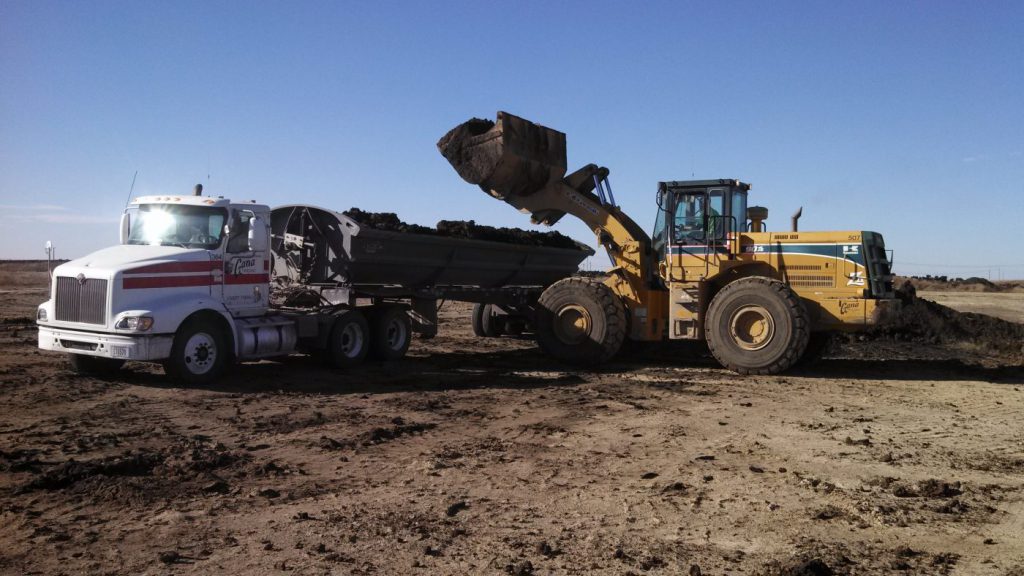
Nature’s greatest fertilizer: manure. Not only can we harness this animal byproduct and use it to increase production in crops, but also add value back to the land we use. As a source for nitrogen, phosphorus and potassium, manure can sometimes eliminate the need for commercial fertilizer. How can livestock producers manage this resource to increase value and return?
Management of Manure
Proper storage and management practices can help to maximize the amount and quality of manure used for fertilizer. Having a manure management plan can help with planning of application or sales of the product, especially when it comes time to getting the product on the field. Each animal facility is different, which is why a customized plan should be utilized and practiced. This plan should include information about storage, nutrient testing, and marketing.

Manure being moved to a field for application
Nutrient Profile
In order to maximize the value of manure, the nutrient profile should match what the field requires. If a producer is looking to spread manure on their own fields, matching the requirements to the test results of the manure is easier. If they are selling the manure to another farmer, lining up the correct dry matter percent and nutrient profile can be more difficult. Even if the livestock facility does not change year after year, the manure should still be sampled and tested for it’s nutrient percentages to maximize the value.
The nutrient profile changes between diets and species, which is why it is important to know the source of the manure on a field. For example, poultry litter is becoming a more common fertilizer in the Midwest, and is much more nutrient dense than other species.
Spreading in Fields
Depending on the manure management plan, spreading season can be different for many producers. Many times it is recommended to get manure on the ground in the fall, after harvest when there is crop residue, but also before the ground freezes, which can cause runoff. UNL Extension also highlights the benefits of spring manure application, as it can increase crop yields and decrease nitrogen loss. Check out more information on spring applications at UNL Water’s website.
Figuring out the logistics of hauling manure to be spread can also be difficult, especially if the application site is not close to the livestock facility. Knowing a plan ahead of time for hauling and contracted work can be a beneficial part of a manure management plan, especially when it comes to maximizing value and returns.
Contact us today for more information on how to maximize the value of manure on a livestock facility, or the process of creating a manure management plan.
